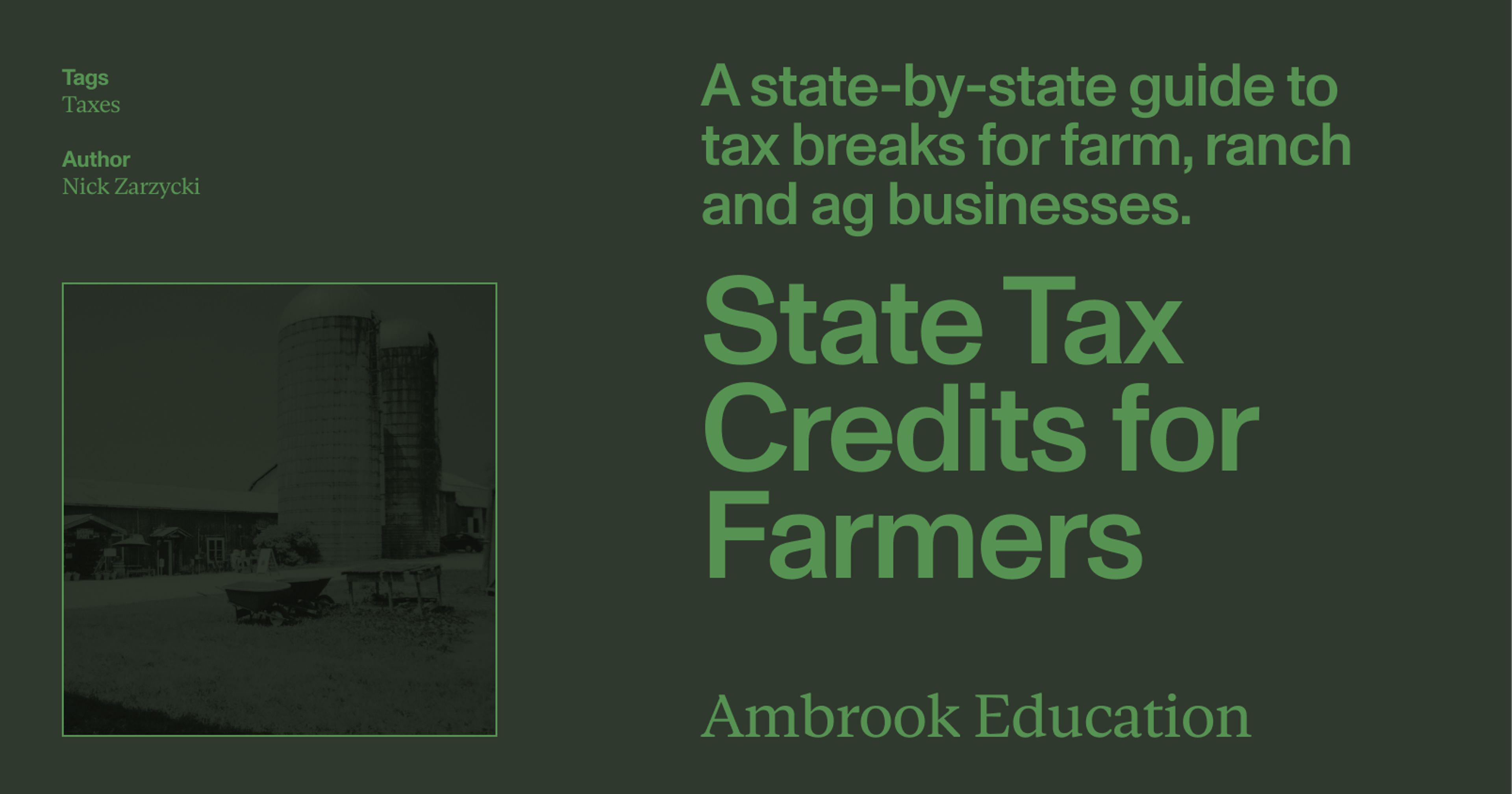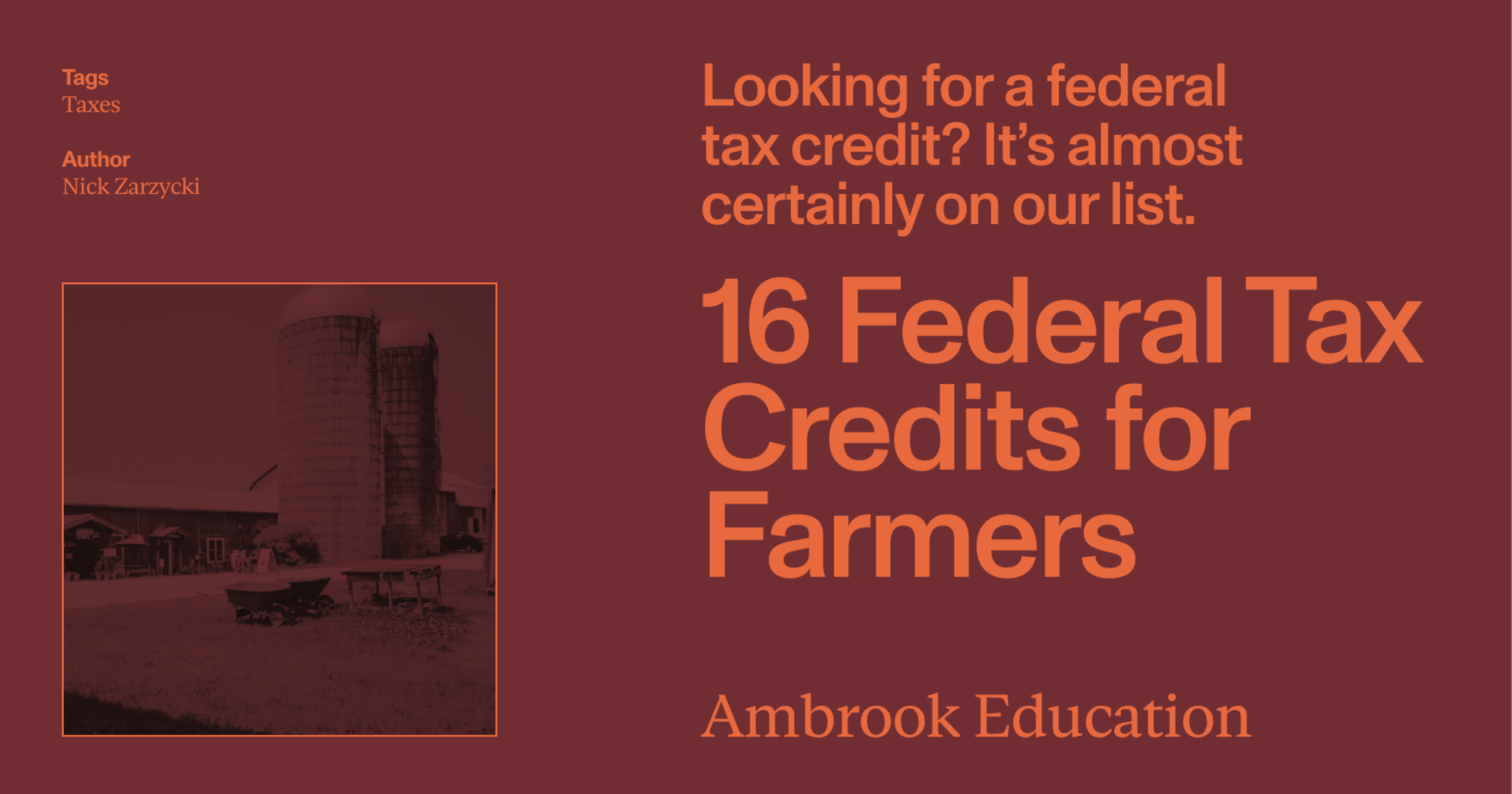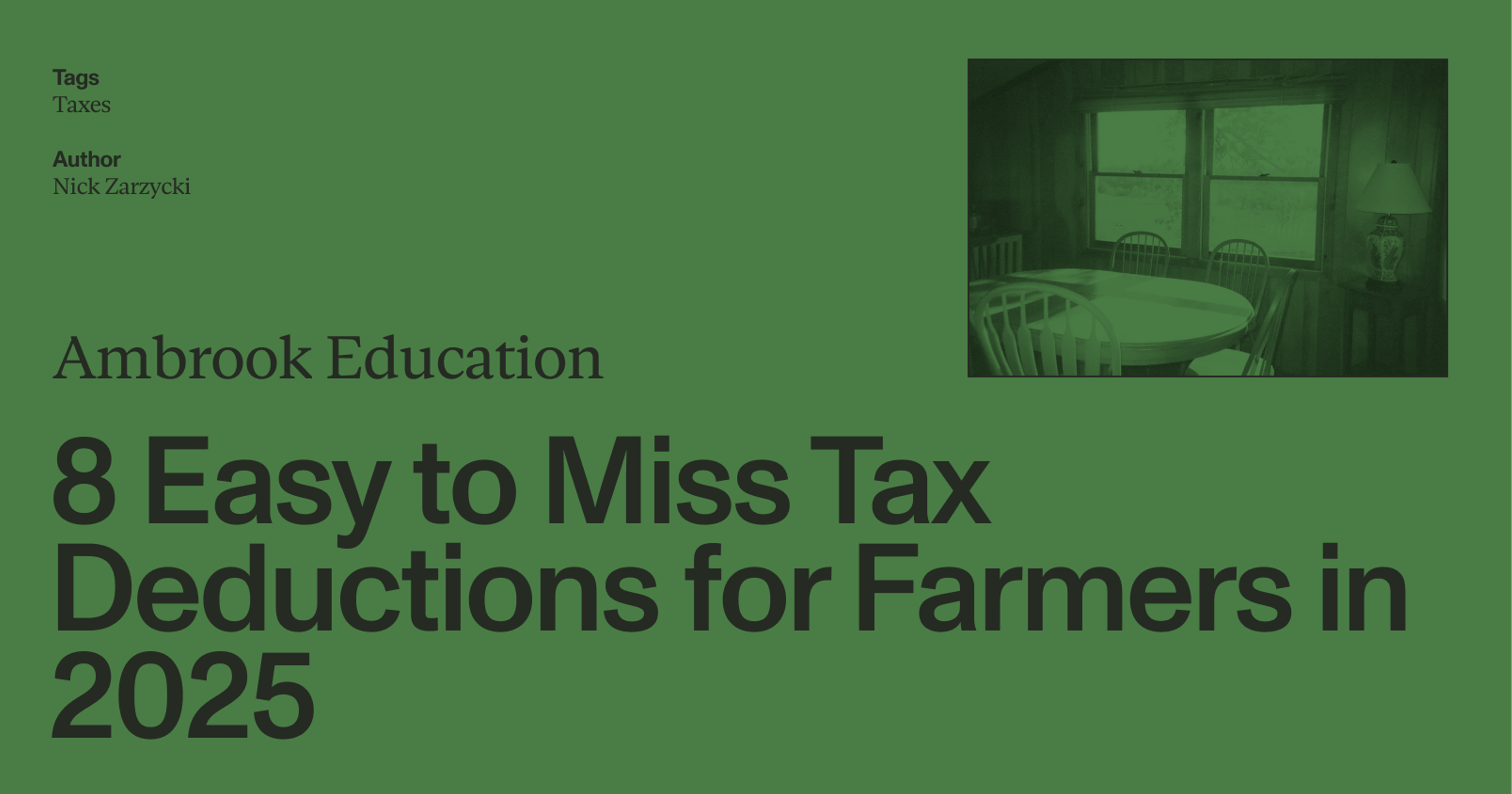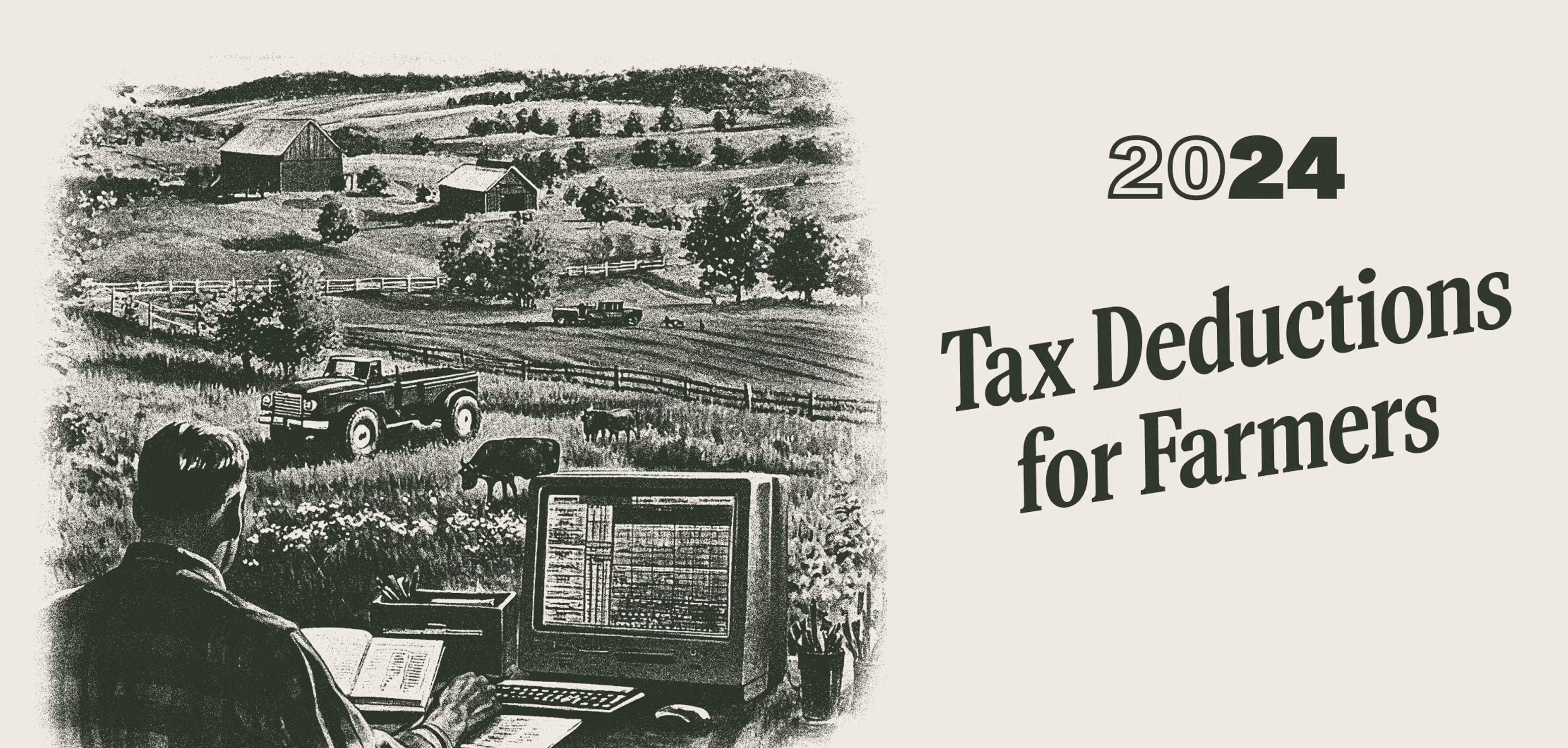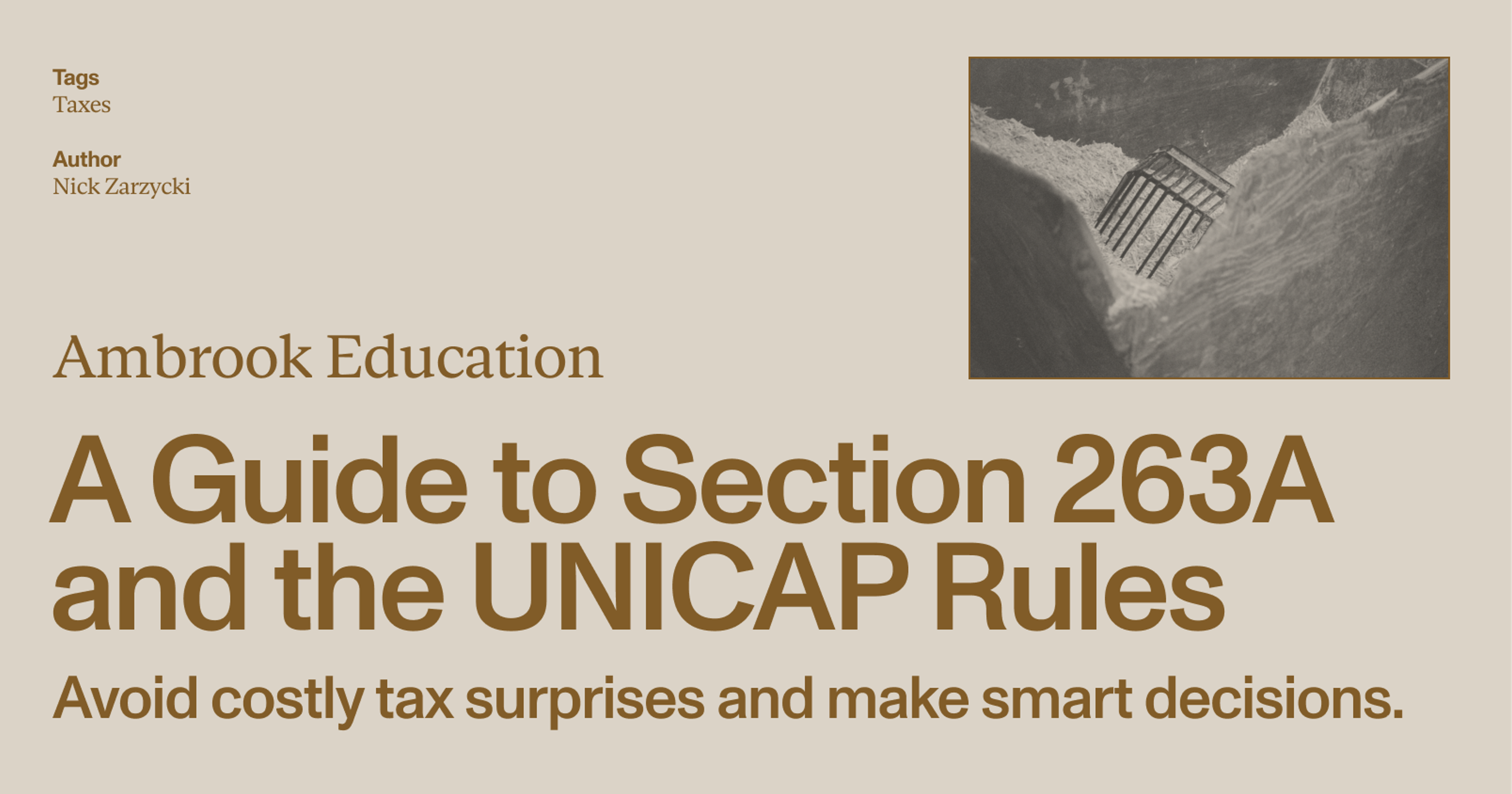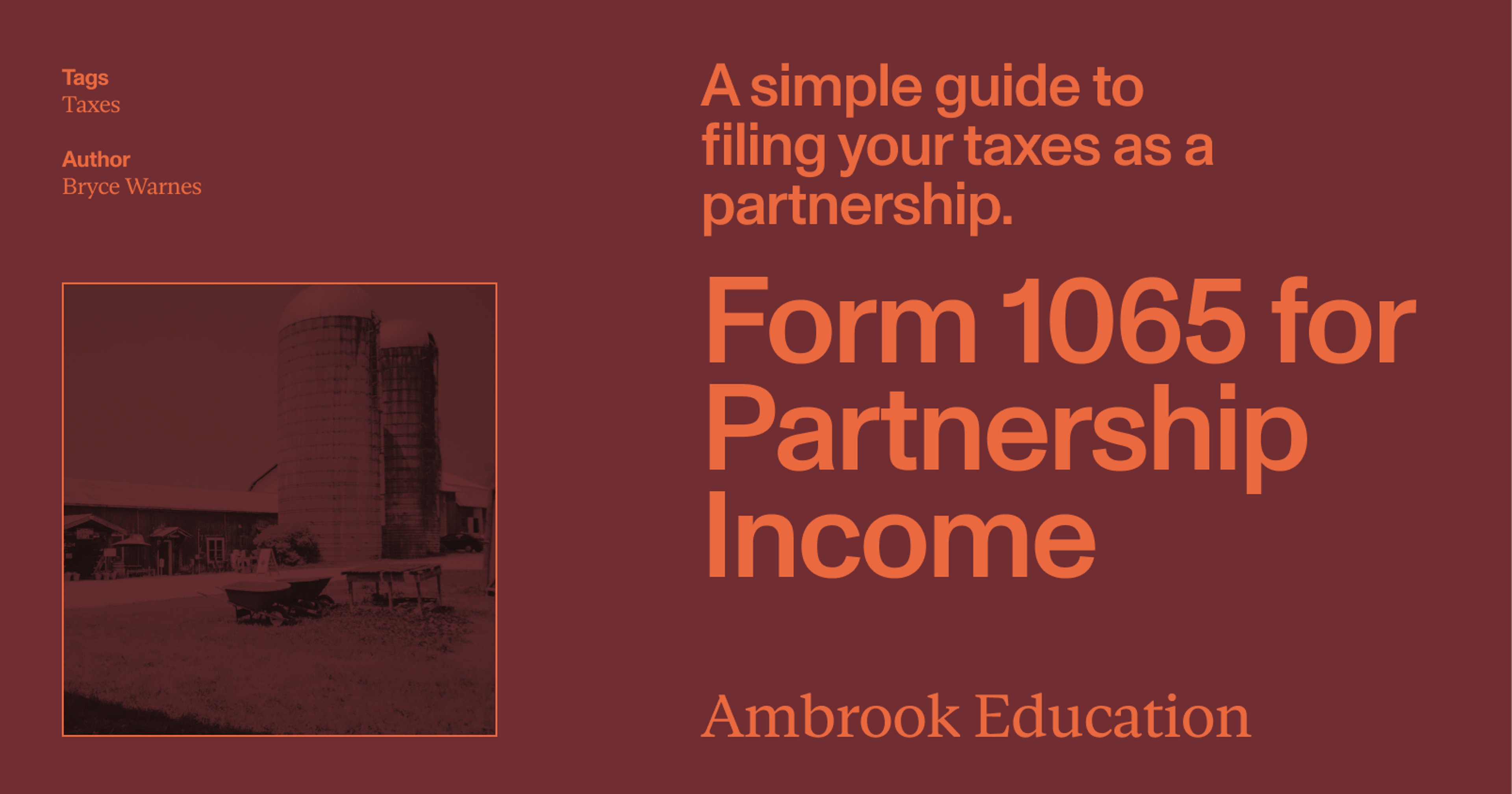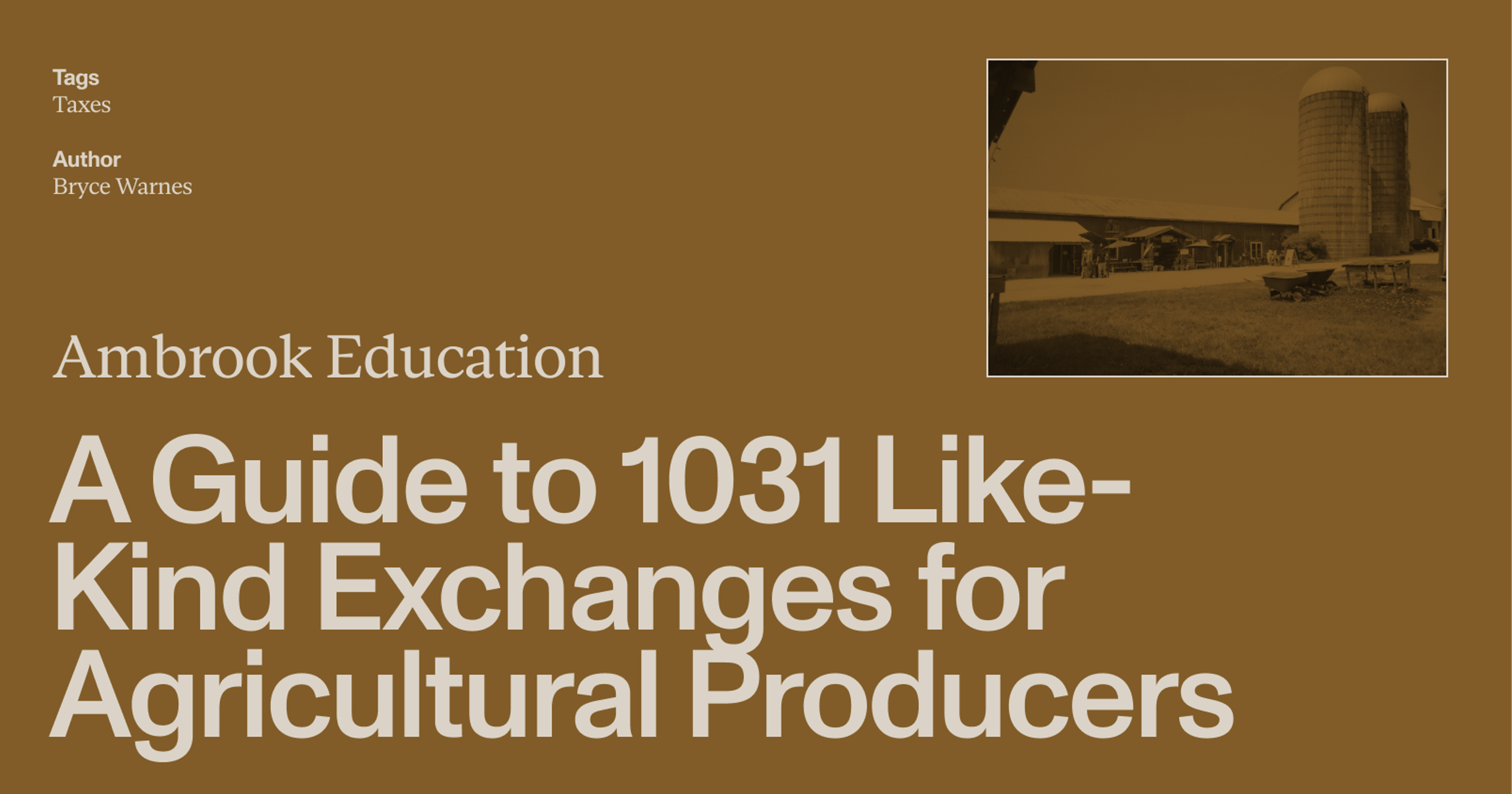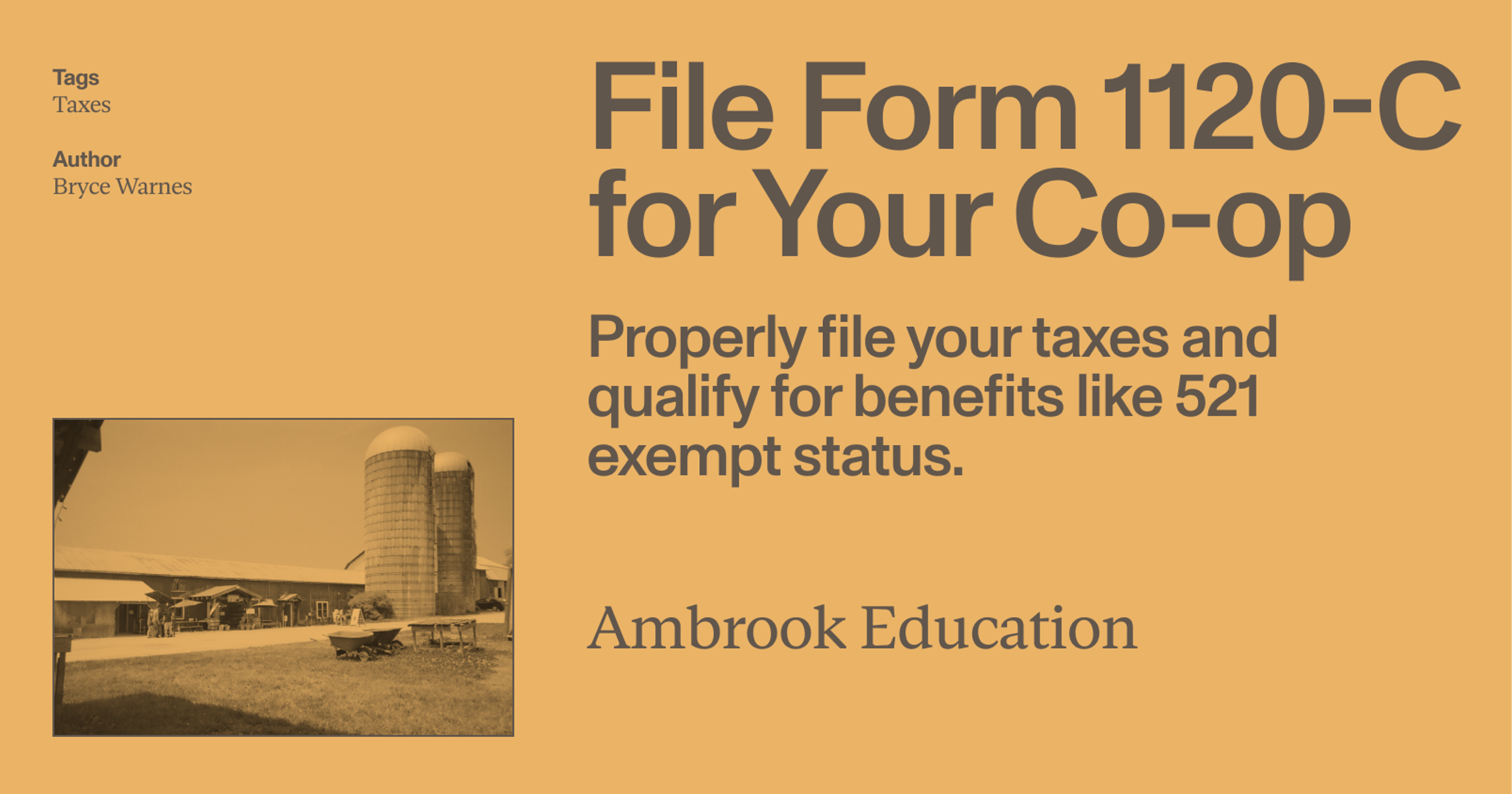A state-by-state breakdown of tax credits, deductions, exclusions and other tax breaks farmers, ranchers and ag businesses can apply to their state tax refund.
Agriculture is great for the local economy, food security and the environment, which might explain why there are so many state tax incentives for it–more than 350 of them by some counts.
Tax credits are a great place to start if you’ve never looked into these before: unlike deductions and exclusions, credits reduce your tax bill dollar-for-dollar, and research shows they benefit low-income farmers and families with children more than other tax incentives.
To help you in your search, we’ve assembled a list of state tax credits for farmers and agricultural businesses by state. (Head over to our guide to federal tax credits for a rundown of federal programs.)
As you look through it, remember to check your tax authority’s website for other credits that aren’t explicitly related to farming, but that you might still qualify for.
Also remember that tax credits are just the tip of the iceberg: there are many grants, funding opportunities and other benefits available through your local, state and federal governments that you could qualify for.
What are ‘refundable’ and ‘non-refundable’ tax credits?
You might have some unused credits left over once you reduce your tax bill to zero. If those unused credits are ‘refundable,’ they increase your tax refund. ‘Non-refundable’ credits are just that: they don’t increase your refund, however you may be able to carry them forward into the next tax year.
Tax credits for new farmers
There’s one type of credit that comes up so often it’s worth mentioning up front: so-called ‘new farmer’ credits.
The high cost of real estate, livestock and equipment can sometimes make starting up a farm prohibitively expensive. To encourage the next generation of operators, many states offer credits to landowners and farmers willing to rent or sell their land, livestock and equipment to new farmers.
The amount of the credit is usually a percentage of rent paid or a percentage of the purchase price, and there’s usually a cap on the total annual amount you can claim. ‘New farmer’ usually means someone who has started farming in the last decade, and in some states the new farmer can’t be related to the individual claiming the tax credit.
As of June 2025, six states offer new farmer tax credit programs, including:
Alabama
Qualified Irrigation System/Reservoir System Tax Credit
This credit is available to any agricultural trade or business that purchases, installs or converts irrigation systems, or develops irrigation reservoirs and water wells. The credit is equal to 20% up to $10,000, or 10% up to $50,000 of the cost of the purchase and installation of any qualified irrigation equipment and any conversion costs related to the conversion of irrigation equipment from fuel to electricity or qualified reservoirs.
Fencing for Agriculture Livestock Applications Exemption
While not a tax credit, up to $25,000 from the sale of fencing materials, such as t-posts, wood posts, barbed wire, net wire, smooth wire, standard metal gates, and other similar materials used for the purpose of fencing in agriculture livestock applications are exempt from state sales and use taxes.
Other state tax incentives:
State tax authority: Alabama Department of Revenue
Arizona
Agricultural Water Conservation System Credit
This credit covers expenses related to purchasing and installing an agricultural water conservation system (i.e., one that is primarily designed to substantially conserve water on land that the taxpayer or taxpayer’s tenant uses to sustain livestock or produce crops) and is equal to 75% of the qualifying expenses.
Credit for Agricultural Pollution Control Equipment
This credit is for expenses that a taxpayer involved in the commercial production of livestock, agricultural, horticultural, viticultural or floricultural products incurred to purchase tangible personal property that is primarily used to control or prevent pollution. The amount of the credit is equal to 25% of the cost of the real or personal property. The maximum credit that a taxpayer may claim under this section is $25,000 in a taxable year.
Other state tax incentives:
State tax authority: Arizona Department of Revenue
Arkansas
Wetland & Riparian Zones Tax Credit Program
This credit is for projects that restore and improve riparian zones, create wetlands, or conserve riparian habitat. The total amount of tax credit that can be claimed is $50,000 per project, not to exceed $5,000 in any one tax year for up to a maximum of ten years. If less than $50,000, the maximum tax credit allowed is equal to the total cost of the approved project. The Department must approve project applications before project activities occur to qualify.
Groundwater Conservation Tax Credit
This program offers tax credits for investments that reduce groundwater use by increasing surface water use or reducing agricultural irrigation water use via land levelling. The maximum credit in one year is the lesser of the taxpayer’s income tax due or $18,000 for agricultural and recreational uses and $200,000 for industrial and commercial uses.
Any unused credits can be carried forward to offset future tax liabilities for up to 15 years.
Other state tax incentives:
State tax authority: Arkansas Department of Finance & Administration
California
California Williamson Act/Farmland Security Zone (FSZ) Program
This program allows farmers to substantially reduce their California property taxes by restricting parcels of land to agricultural or related open space use for a period of at least ten years. A similar program called the Farmland Security Zone (FSZ) program allows a further reduction in property taxes in exchange for a 20 year minimum agreement. Landowners interested in applying for Williamson Act and FSZ contracts should contact their county government for more information.
Other state tax incentives:
State tax authority: California Franchise Tax Board
Colorado
Agricultural Stewardship Practices Tax Credit
This refundable income tax credit encourages responsible stewardship practices on a farm or ranch. It covers between $5 and $150 per acre of land up to a maximum of $300,000 per year, depending on the number of qualified stewardship practices.
Tax Credit for Transfer of Agricultural Asset
This is a refundable income tax credit for the sale or lease of land, crops, livestock and livestock facilities, farm equipment and machinery, grain storage, irrigation equipment, or water used for agriculture to certain agricultural producers. It’s equal to 5% of the lesser of the sale price or fair market value up to a maximum credit of $32,000 for one year, or 10% of the gross rental income up to a maximum of $7,000.
Small family farms (annual gross revenue below $350,000) may be able to claim a tax credit for costly equipment purchases that increase access to or lower prices for healthy foods in low income, low access areas. The credit equals 75% of the cost of the equipment.
Other state tax incentives:
State tax authority: Colorado Department of Revenue
Connecticut
Property Tax Exemption for Farm Buildings, and Farm Machinery
While not a tax credit, under this program farmers may have up to $100,000 in the assessed value of farm equipment and machinery exempt from property taxes. An additional $100,000 can be exempt for machinery, and up to $100,000 per farm building used exclusively in farming may also be exempt if the municipality votes to approve. To qualify, applicants must derive at least $15,000 in gross sales or demonstrate $15,000 in expenses on the farm.
Retail sales of tangible personal property used exclusively in agricultural production are exempt from sales and use taxes in Connecticut if the purchaser qualifies for and has been issued a Farmer Tax Exemption Permit. Any person engaged in agricultural production as a trade or business is eligible for an exemption permit, but they must apply with the Department of Revenue by filing Form REG 8.
Other state tax incentives:
State tax authority: Connecticut Department of Revenue Services
Georgia
Agribusiness and Rural Jobs Tax Credit
A rural investor who has made a capital investment in a rural fund and has received certification from the Georgia Department of Community Affairs may claim this tax credit, which is equal to a percentage of the purchase price paid to the rural fund for the capital investment.
Georgia Conservation Tax Credit Program
Landowners who donate fee-title lands or permanent conservation easements to a government entity, state agency, or an accredited land trust may apply for a credit against their state income taxes. Approved donors may earn tax credits equal to 25% of the fair market value of their donations, up to $250,000 for individual donors and $500,000 for corporate and partnership donors.
Georgia Agricultural Tax Exemption (GATE)
While not a tax credit, this program offers sales tax exemptions to certain qualified agriculture producers in Georgia. Producers may only use the GATE exemption for qualifying agricultural products that they use on their farm.
Other state tax incentives:
State tax authority: Georgia Department of Revenue
Hawaii
Important Agricultural Lands Qualified Agricultural Cost Tax Credit
This program allows eligible landowners to claim a credit for certain qualified agricultural expenses. The credit is equal to the lesser of 25% of the qualified agricultural costs or $625,000 in the first year that it’s claimed, 15% or $250,000 in the second year, and 10% or $125,000 in the third year.
Other state tax incentives:
State tax authority: Hawaii Department of Taxation
Illinois
Exempt Sale or Purchase of Machinery and Equipment Used for Production Agriculture
While farmers are not exempt from sales taxes in Illinois, they may file Form ST-587 to claim a sales tax exemption for certain machinery and equipment used in agriculture. This doesn’t include buildings, real estate and vehicles like trucks, but does include farrowing crates, stalls, fence panels, flooring with a waste disposal system, precision farming technology, soil testing equipment, computers, monitors, software and GPS mapping.
Other state tax incentives:
State tax authority: Illinois Department of Revenue
Indiana
Agricultural Production Exemptions
While not a tax credit, Indiana provides several exemptions from sales and use tax relating to agricultural production. The exemptions are limited to purchases of animals, feed, seed, plants, fertilizer, pesticides, fungicides, and other tangible personal property and agricultural machinery, tools, and equipment to be directly used in the direct production of food or commodities that are sold either for human consumption or for further food or commodity production.
Other state tax incentives:
State tax authority: Indiana Department of Revenue
Iowa
Iowa Ag Land Credit and Family Farm Tax Credit
These credits partially offset the school tax burden borne by agricultural real estate, allowing a credit for any general school fund tax in excess of $5.40 per $1,000 of assessed value. The Ag Land credit automatically covers farmland as determined by the Assessor’s Office, no application is required. The Family Farm credit is available only for landowners actively engaged in farming or if a family member is farming the land, and an application must be completed with the Assessor’s office to qualify.
Farm to Food Donation Tax Credit
Farmers who donate self-produced food commodities to food banks and food pantries can receive a credit equal to the lesser of $5,000 or 15% of the value of the commodities donated during the year for which the credit is claimed. Local food organizations must register with the Iowa Department of Revenue (Department) to be recognized as an authorized distributor of Farm to Food Tax Credit Donation Receipts.
This credit encourages home ownership through property tax relief, and is equal to the actual tax levy on the first $4,850 of actual value. Those claiming the credit must own and occupy the property as a homestead on July 1 of each year, declare residency in Iowa for income tax purposes and occupy the property for at least six months each year. For homeowners age 65 or older, the exemption is $6,500 of taxable value.
Other state tax incentives:
State tax authority: Iowa Department of Revenue
Kentucky
Kentucky Selling Farmer Tax Credit (KSFTC) Program
This program encourages continued use of agricultural land for farming by granting tax credits to selling farmers who agree to sell agricultural land and assets to beginning farmers. Farmers wanting to sell agricultural land and assets may be eligible for a Kentucky income tax credit up to 5% of the purchase price of qualifying agricultural assets, subject to a $25,000 calendar year cap and a $100,000 lifetime cap.
Other state tax incentives:
State tax authority: Kentucky Department of Revenue
Maryland
Farmers who donate Maryland-grown fruits, vegetables, eggs, dairy, and meat products to non-profit organizations for human consumption can claim a credit equal to 100% of the wholesale value of the donated products, up to $5,000 per farm annually with potential for an increase to $10,000.
Preservation and Conservation Easement Credit
You may be eligible for this credit if you donated an easement to the Maryland Environmental Trust, the Maryland Agricultural Land Preservation Foundation or the Maryland Department of Natural Resources to preserve open space, natural resources, agriculture, forest land, watersheds, significant ecosystems, view sheds or historic properties. The maximum annual credit is $5,000 per year.
Wineries and Vineyards Tax Credit
Businesses may claim a credit against the State portion of the income tax for up to 25% of the qualified capital expenses made in connection with the establishment of new wineries or vineyards, or the capital improvements made to existing wineries or vineyards in Maryland.
Other state tax incentives:
State tax authority: Comptroller of Maryland
Massachusetts
When the cost of milk drops below a price based on federal standards, a dairy farmer may be eligible for the tax credit against Massachusetts income tax or corporate excise liability. The credit amount is based on the amount of milk the farm produces and sells during the tax year.
Farming and Fisheries Tax Credit
Taxpayers primarily engaged in agriculture, farming, or commercial fishing may be eligible for a credit of 3% of the cost of qualifying tangible property, including buildings and structures used solely in farming, agriculture, or fishing with a useful life of at least 4 years.
Other state tax incentives:
State tax authority: Massachusetts Department of Revenue
Michigan
Farmland and Open Space Preservation Tax Credit
This program encourages the protection of farmland and open spaces through agreements that restrict development on that land. Landowners are entitled to an income tax credit equal to the amount of the property taxes on the land and improvements covered by the agreement, less 3.5% of the landowner’s total household income.
Other state tax incentives:
State tax authority: Michigan Department of Treasury
Minnesota
Owners of Agricultural Assets Credit
This program provides state tax credits to landlords and sellers (asset owners) who rent or sell farmland, equipment, livestock, and other agricultural assets to beginning farmers in the current tax year. Both beginning farmers and asset owners must submit applications with leases and/or sale documents to hold their place in line for first-come, first-served funding.
Beginning Farmer Management Credit
You may be eligible for a nonrefundable credit of up to $1,500 if you are a beginning farmer in Minnesota who participated in a financial management program approved by the Rural Finance Authority.
Other state tax incentives:
State tax authority: Minnesota Department of Revenue
Missouri
Based on pounds of finished sale weight, this credit provides Missouri beef cattle farmers with an economic incentive to background and/or finish Missouri born and raised qualified beef cattle in the state.
Family Farm Breeding Livestock Loan Program
This credit is for Missouri lenders who make breeding livestock loans to small farmers. To participate in the program, a small farmer shall first obtain approval for a family farm breeding livestock loan from an eligible lender. The small farmer shall not be charged interest by the lender for the first year of the qualified loan.
Meat Processing Facility Investment Tax Credit Program
Meat processing facilities located in Missouri that construct, improve, or acquire buildings, facilities, or equipment used exclusively for meat processing are eligible to apply. The credit is equal to 25% of the amount the taxpayer paid for modernization and expansion, up to $75,000 per year.
New Generation Cooperative Incentive Tax Credit Program
This program encourages investment in entities that process Missouri agricultural commodities and agricultural products into value-added goods. The amount of a tax credit is the lesser of 50% of the member’s cash investment or $15,000.
Specialty Agricultural Crops Tax Credit Program
This credit is for Missouri lenders who make loans to family farmers cultivating specialty crops. The approved tax credit will be up to 100% of the approved first year’s interest waived on a qualified eligible loan. The maximum eligible loan cannot exceed 90% of the cost of purchasing farming resources and the maximum loan amount is $35,000.
Urban Farm Investment Tax Credit Program
This credit covers eligible expenses incurred in the establishment or improvement of an urban farm which focuses solely on food production for sale or donation to the public. The credit is worth 50% of the eligible construction or development costs, and a taxpayer cannot claim a tax credit in excess of $5,000 for each urban farm. The total amount of tax credits authorized for all taxpayers on any given urban farm cannot exceed $25,000.
Agricultural Products Utilization Contributor Tax Credit Program
This credit is worth up to 100% of a contribution from a person, partnership, corporation, trust, limited liability company or other donor made to the authority to be used for financial or technical assistance to rural agricultural businesses as approved by the authority.
Other state tax incentives:
State tax authority: Missouri Department of Revenue
Nevada
Agricultural Exemptions from Sales Tax
While not a tax credit, farm machinery and equipment are exempt from the state portion of sales tax in Nevada, including farm tractors, implements of husbandry, equipment used for irrigation, and parts used in the repair or maintenance of farm machinery and equipment.
State tax authority: Nevada Department of Taxation
New Jersey
Reduced Assessment For Farmland
While not a tax credit, land in New Jersey devoted to agricultural or horticultural use may be assessed for property tax purposes on its value for those uses as well as its agricultural productivity value, rather than on the market value of the land, which can result in a reduced assessment.
Other state tax incentives:
State tax authority: New Jersey Division of Taxation
New Mexico
Agricultural Biomass Income Tax Credit
Farmers may claim this credit for use of anaerobic digestion to convert waste from dairy farms through anaerobic digestion as an alternative fuel, also referred to as ‘biogas’ or renewable natural gas (RNG). The amount of the credit is calculated at $5.00 per wet ton of biomass. The state caps total credits claimed under this program at $5,000,000 per year.
Other state tax incentives:
State tax authority: New Mexico Taxation and Revenue Department
New York
Businesses engaged in the business of farming that pay school district property taxes on qualified agricultural property may be eligible for this credit. The credit is based on the amount of qualified acres and the amount of school district property taxes paid.
Farm workforce retention credit
Farmers who employ farm employees who work at least 500 hours may be eligible for this credit, equal to $1,200 per eligible farm employee.
Farm donations to food pantries credit
Farmers who make a donation to an eligible food pantry in New York State may be able to claim this credit, equal to 25% of the fair market value of qualified donations, with a maximum benefit of $5,000 per year.
Farmers may be able to claim this credit for qualified property principally used in the production of farming, agriculture, horticulture, floriculture, or viticulture into service during the tax year. The credit is 20% of the qualified investment in property and may be refundable.
Eligible farmers who employ farm employees and pay them eligible overtime may be eligible for a credit worth 118% of additional overtime paid above the overtime work threshold (but not hours in excess of 60 hours).
Credit for rehabilitation expenses for historic barns
This credit is for qualified expenditures incurred in the rehabilitation of a historic barn located in New York State. You must own the barn to be eligible for the credit and the New York Office of Parks, Recreation and Historic Preservation is responsible for determining if the barn and related expenditures qualify for the credit.
Other state tax incentives:
State tax authority: New York Department of Taxation and Finance
North Dakota
This credit is based on the cost of equipment purchased to automate a manufacturing process, including animal-agriculture processing. The tax credit is equal to up to 15% of the cost of the qualifying machinery and equipment.
Agricultural Commodity Processing Facility Investment Tax Credit
This program provides a nonrefundable income tax credit for making an investment in a business that is certified as a qualifying agricultural commodity processing facility. The credit is equal to 30% of the investment, no more than $50,000 of the allowable tax credit may be used per tax year and there is a $250,000 tax credit limit for all tax years.
Other state tax incentives:
State tax authority: North Dakota Office of State Tax Commissioner
Ohio
Ohio Beginning Farmer Tax Credit Program
This program offers two separate income tax credits: a credit for beginning farmers who attend a financial management program, and another credit to individuals/businesses that sell or rent farmland, livestock, buildings, or equipment to beginning farmers. For asset owners, the credit equals 3.99% of the sale price or the gross rental income that the individual or business received during the first three years of the rental agreement.
Other state tax incentives:
State tax authority: Ohio Department of Taxation
Oregon
Agricultural Employer Overtime Tax Credit
Oregon requires agricultural employers to pay certain workers for overtime hours worked and provides for a refundable personal or corporate income tax credit for employers for a percentage of wages paid as overtime pay.
Agriculture Workforce Housing Tax Credit
This program provides credits to investors who incur costs to construct, install, acquire, or rehabilitate agriculture workforce housing. The tax credit may be taken on 50% of the eligible costs actually paid or incurred to complete a farmworker housing project.
Voluntary removal of riparian land from farm production
Taxpayers may claim a credit equal to 75% of the market value of crops forgone when riparian land is voluntarily taken out of farm production. They must own the riparian land that is the basis of the credit and be actively engaged in farming operations on land adjacent to the riparian land.
On-farm processing facilities credit
This credit can be claimed for qualified farm machinery and equipment that was subject to assessment and property taxation for the property tax year beginning in the income tax year for which the credit is being claimed. The amount of the credit is the lesser of the effective property tax rate multiplied by the adjusted basis of the qualified machinery and equipment or $30,000.
Oregon allows a tax credit for crops donated to a gleaning cooperative, food bank, or other charitable organization engaged in the distribution of food without charge. The credit is 15% of the value of the quantity of the crop donated, computed at the wholesale market price at the time of donation.
Bovine Manure Production or Collection Credit
Bovine manure producers or collectors can claim a credit for the collection of bovine manure that is used as biofuel or to produce biofuel. The credit equals $3.50 for each wet ton of bovine manure.
Other state tax incentives:
State tax authority: Oregon Department of Revenue
Pennsylvania
Resource Enhancement & Protection (REAP) Program
Under this program farmers can claim tax credits to offset between 50-90% of the costs of implementing best management practices (BMPs) including planning and engineering, materials, labor, and more.
Pennsylvania: Beginning Farmer Tax Credit Program
This program provides tax credits to owners of agricultural assets who sell or rent agricultural assets to beginning farmers. It’s equal to 5% of the lesser of the sale price or the fair market value of the agricultural asset, up to a maximum of $32,000, or 10% of the gross rental income in each of the first, second, and third years of a rental agreement, up to a maximum of $7,000 per year.
Other state tax incentives:
State tax authority: Pennsylvania Department of Revenue
South Carolina
Agribusiness Income Tax Credit
Agribusiness operations or agricultural packaging operations that increase their purchases of South Carolina-grown farm products by 15% or more in a calendar year qualify for this credit, which cannot exceed $100,000. This nonrefundable credit must be certified by the Coordinating Council for Economic Development and may apply to Income Tax or Withholding Tax.
If you use anhydrous ammonia for agricultural purposes, you may qualify for this refundable credit, which equals the amount paid to buy the additive for the ammonia required by state law.
Drip/Trickle Irrigation Systems Credit
You are eligible for this credit if you buy and install conservation tillage equipment, a drip/trickle irrigation system, or dual-purpose combination truck and crane equipment. This nonrefundable credit is limited to 25% of expenses and cannot exceed $2,500 in each of the three categories.
You can qualify for this credit if you produce milk for sale. The refundable credit is equal to $10,000 for the first 500,000 pounds of milk produced and sold below the production price and $5,000 for each additional 500,000 pounds produced and sold the same way. The credit amount must be certified by the South Carolina Commissioner of Agriculture.
Other state tax incentives:
State tax authority: South Carolina Department of Revenue
South Dakota
South Dakota doesn’t offer any agriculture-specific tax credits, but their Agricultural Land Assessment and Property Tax Guide breaks down how property owners can benefit from ag land classification.
State tax authority: South Dakota Department of Revenue
Tennessee
Agricultural Sales and Use Tax Exemption
While not a tax credit, Tennessee offers a sales and use tax exemption to “qualified farmers and nursery operators” for the purchase of tangible personal property used primarily (more than 50%) in agricultural operations.
State tax authority: Tennessee Department of Revenue
Texas
While not a tax credit, farmers, ranchers and timber producers can claim exemptions from some Texas taxes when purchasing certain items used exclusively to produce agricultural and timber products for sale. To qualify, operators must apply for an agricultural and timber registration number (Ag/Timber Number).
Agricultural Special Appraisal
While not a tax credit, farmland in Texas devoted to agricultural use may be appraised based on the land’s capacity to produce agricultural products (productivity value) instead of at market value, which can result in a reduced assessment.
State tax authority: Texas comptroller of public accounts
Utah
Farm Operation Hand Tools Credit
This credit is for sales and use tax paid on hand tools purchased and used or consumed primarily and directly in a farming operation in Utah. The credit only applies if the purchase price of a tool is more than $250.
Agricultural Off-Highway Fuel Credit
Taxpayers may claim a credit of 36.5 cents per gallon for motor fuel and undyed diesel fuel bought in Utah and used to operate stationary farm engines and self-propelled farm machinery used solely for commercial non-highway agricultural use if the fuel was taxed at the time it was bought.
Other state tax incentives:
State tax authority: Utah State Tax Commission
Vermont
This nonrefundable credit is available to farmers who calculate Federal tax using Federal Schedule J, and is equal to 24% of the federal Farm Income Averaging Credit.
Machinery and Equipment Tax Credit
This tax credit is for businesses that contribute substantially to the economy of a Vermont Rural Economic Area Partnership (REAP) Zone. Qualifying businesses are located in a REAP Zone, create, produce, or process tangible personal property for sale and propose to make qualified capital expenditures.
Other state tax incentives:
State tax authority: Vermont Department of Taxes
Virginia
Agricultural Best Management Practices Credit
Farmers might qualify for this credit if they have a soil conservation plan or resource management plan in place that their local soil and water conservation district has approved. The credit is equal to 25% or 50% of the first $100,000 spent depending on the type of plan, and the total amount may not exceed $75,000.
Conservation Tillage and Precision Agriculture Equipment Credit
Farmers may claim this credit for an approved soil conservation or nutrient management plan, or for the purchase of certain equipment designed to reduce soil compaction and disturbance, or to more precisely apply fertilizers and pesticides. The credit is equal to 25% of the cost of the equipment and the maximum credit is $17,500.
Farm Wineries and Vineyards Tax Credit
This credit applies to operators starting a new farm winery or vineyard, or improving an existing one. A vineyard must have at least one acre dedicated to growing grapes that a Virginia farm winery will use to make wine. The credit is equal to 25% of the cost of qualified capital expenditures related to starting or improving the farm winery or vineyard.
Farmers who donate crops they grow or wholesome food they produce to a nonprofit food bank may claim this credit, which is equal to 50% of the fair market value of the crops or food donated. The total amount of credit for all food donations you make during the year can’t be greater than $10,000.
Hardwood Initiative Tax Credit
You may qualify for this credit if you implement beneficial hardwood best practices in your forest. The credit covers up to $1,000 of the amount you spent implementing beneficial hardwood best practices.
Riparian Waterway Buffer Credit
You may qualify to claim this credit if you own land along a Virginia river, stream or the Chesapeake Bay that you harvest timber from, and leave the trees near the waterway standing, forming a “riparian buffer.” The credit is equal to 25% of the value of the timber in the buffer, if the timber were harvested. The maximum amount of the credit is $17,500, or your total tax liability, whichever is less.
Other state tax incentives:
State tax authority: Virginia Department of Taxation
Washington
Farm Sales and Use Tax Exemptions
While not a tax credit, many purchases by farmers in Washington are exempt from sales tax. Consult the Washington Agriculture Tax Guide for a full list of purchases eligible for exemption.
Other state tax incentives:
State tax authority: Washington Department of Revenue
West Virginia
Producers who donate fresh, healthy agricultural products to local food programs can earn a tax credit up to $5,000, which can be used against personal income tax or corporation net income tax (but not both). The credit is equal to 30% of the value of the donated edible agricultural products to one or more nonprofit food programs in the state.
Environmental Agricultural Equipment Credit
Taxpayers may claim this credit for the purchase and installation of qualified agricultural equipment, including advanced technology pesticide and fertilizer application equipment, conservation tillage equipment and nutrient management systems. The credit is equal to 25% of the price of all certified expenditures for qualified agricultural equipment during the taxable year.
Other state tax incentives:
State tax authority: West Virginia Tax Division
Wisconsin
Farmland Preservation Tax Credit
Owners of farmland that meets applicable state soil and water conservation standards may claim a credit on that land based on the acreage and how they participate in the farmland preservation program.
Owners of farmland may claim this credit, which is based on an annually adjusted percentage of the first $10,000 in property taxes they pay, up to a maximum credit amount of $1,500. The sum of the farmland tax relief credit and any farmland preservation tax credit(see above) cannot exceed 95% of the total property tax amount.
Manufacturing and Agriculture Credit
This credit is available to claimants that derive qualified production activities income from property located in Wisconsin that is assessed as either manufacturing or agricultural. The credit is 7.5% of eligible qualified production activities income.
Other state tax incentives:
State tax authority: Wisconsin Department of Revenue
Make tax season less taxing with Ambrook
Ambrook’s Schedule F category tags are tailor-made for agriculture businesses, saving you hours on tax prep. With features like automated financial reporting, simplified bookkeeping, and effortless bill pay and invoicing, Ambrook is more than just a farm tax and accounting tool: it takes the guesswork out of running your business. Want to learn more? Start your 7 day free trial today.
Want to learn more about Ambrook?
This resource is provided for general informational purposes only. It does not constitute professional tax, legal, or accounting advice. The information may not apply to your specific situation. Please consult with a qualified tax professional regarding your individual circumstances before making any tax-related decisions.

